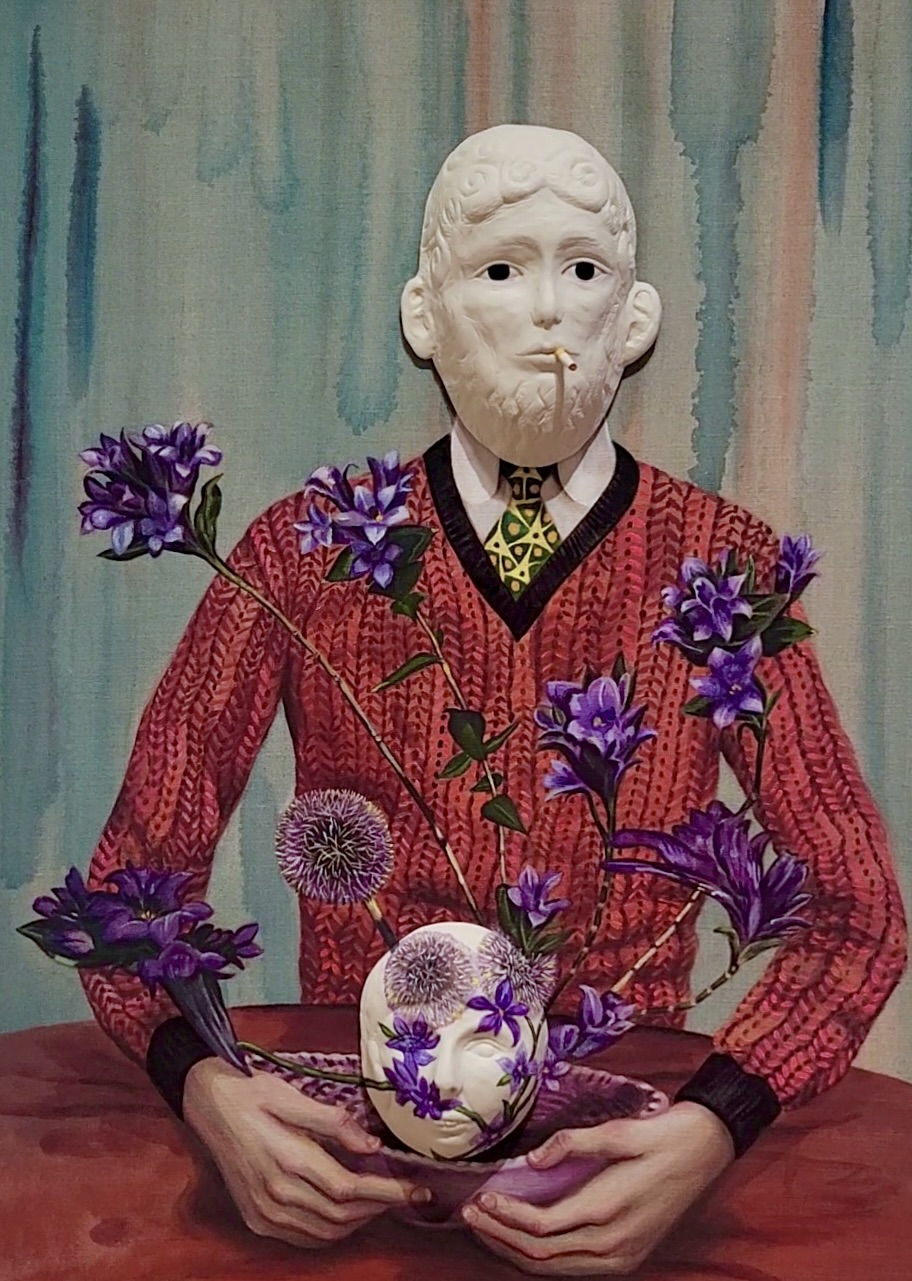Shary Boyle’s Vesselling is now on view at the Patel Brown Gallery.
Shary Boyle is a Toronto-based artist whose imaginative approach cultivates her unique world-building abilities. The fantasy worlds that Boyle fashions through painting and sculpture are unsettling and sophisticated, surreal and theatrical. Boyle provokes the curious minds of the visitors through her multimedia and multi-dimensional works. She invites us all to discover our inner imaginative self. Her exhibition Vesselling is now on view at the Patel Brown Gallery.
Curator and writer Anaïs Castro’s accompanying exhibition text explains that Vesselling, at its core, refers to “the act of holding space for a vulnerable community, a safe and contained environment to share and reflect on complex or difficult realities.” Boyle conjures this notion through her unique craftsmanship, complexity and world-making to guide the audience’s experience. The works within the exhibition creates a space that invites the viewers to take a journey to a mystical reality, in which the materiality, their nature and their relation to reality is being challenged.
Upon entering the gallery space, a long podium displays several sculptures that are shaped and entangled in twisted forms. The podium provides the viewers with the ability to walk around the sculptures to explore each angle of their disproportionate bodies.
A two-coloured sculpture is placed in the center of the podium, displaying two pot-shaped bodies entwined in a close and intimate embrace. The larger, dark figure spreads its legs, inviting the smaller, white figure to fill the space between them. The figures constitute an abstract, continuous shape—their relationship is dynamic and romantic.
“Dysfunctional ceramic vessels serve as metaphors for human connection and receptacles for human values—contained forms that embody the complex processes of personal, and societal, relationships,” Castro explained.
The series of paintings that hang around the periphery of the gallery space is entitled Grafters. The collection seems to represent As a collective, it seems as if all the paintings are frozen moments of a mystical puppet show or a ritualistic ceremony that can be compared to theater plays, television shows or everyday chores that we witness in our surroundings. Traditional painting canvases display figures with ceramic masks covering their faces. Some paintings incorporate everyday objects such as ribbon, hair, jewelry, buttons and so forth.
These paintings play with reality and imagination, bringing up curious, mystical, dreamy and metamorphic narrative within different visual frames. The ceramic masks, on one hand, function to prevent the viewers from seeing who is underneath. This may prompt the viewers to curiously look closer to see the set of eyes behind the mask. On the other hand, the masks give the paintings a sense of liveliness as if they are emerging out of the painting to confront the viewers with their tangible presence in our world. In Castro’s words, paintings in Grafters series “function within the logic of a double-performance.”
In one of the paintings, titled The florist, Boyle depicts a mysterious space with the main figure in the center holding two flowers—Anthurium and pink Gladiolus. Even though the ceramic mask covering the florist’s face emphasizes the ambiguity of the work, the irises penetrate through the mask and follow you, establishing the figure’s presence in the moment. The flowers, along with the smooth painting technique and the decoration of the upper part of the painting, offers a soft and feminine setting. In contrast to the softness of the work, there is a hidden violence that is projected via the appearance of a knife.
Vesselling will be on view at Patel Brown from Feb. 29 to April 20.
